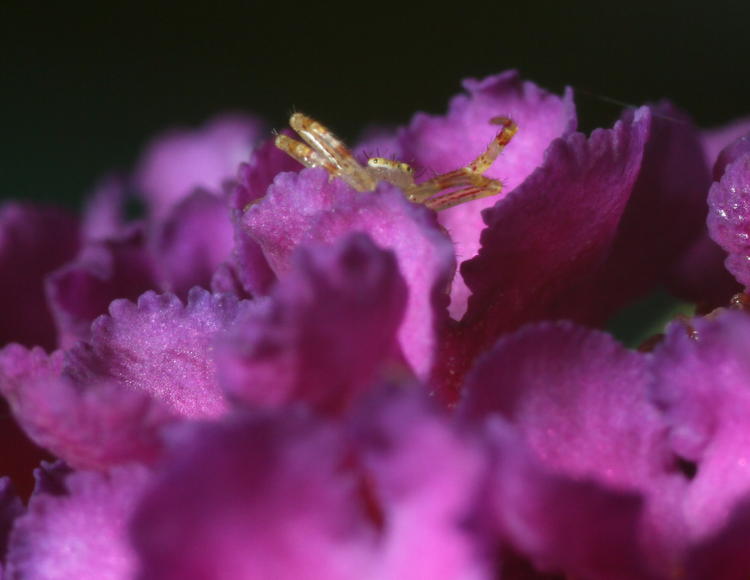
If you have the faintest interest in doing arthropod photography, you could do a lot worse than getting yourself a butterfly bush (Buddleia davidii) or three. They’re readily available most anywhere, come in a variety of colors, and most importantly, have a very long blossoming season while attracting a significant breadth of insects, as well as hummingbirds on occasion. This year, I have three, soon to be joined by a fourth (if I ever get around to transplanting it from a neighbor’s house – yes, with their permission.) But by far, it’s been the Black Knight variety that’s been the most productive, and I haven’t even staked it out for a long period to really do the job right.
Several examples of the species above are found routinely on the blossoms now, tiny little crab spiders that I’ve never tried to pin down the exact identification of, but genus Thomisidae anyway. They’re seriously outclassed by a lot of the pollinators that arrive, but they’re finding enough to eat – for instance, they’re the perfect size to prey on mosquitoes, so they’re certainly not going to starve.
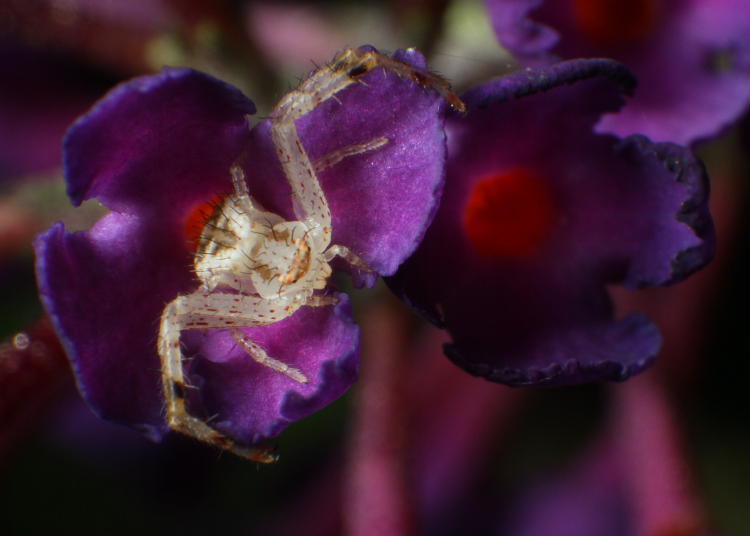
If you’re familiar with butterfly bushes, you know that they bloom in elongated clusters of several dozen to several hundred little blossoms, each only 4-6mm across, so you can guess the scale of the spider – from normal viewing distances, they simply look like chaff. The ambush bugs, while still quite small, are notably bigger, but the largest predators that I’ve found are the mantids.
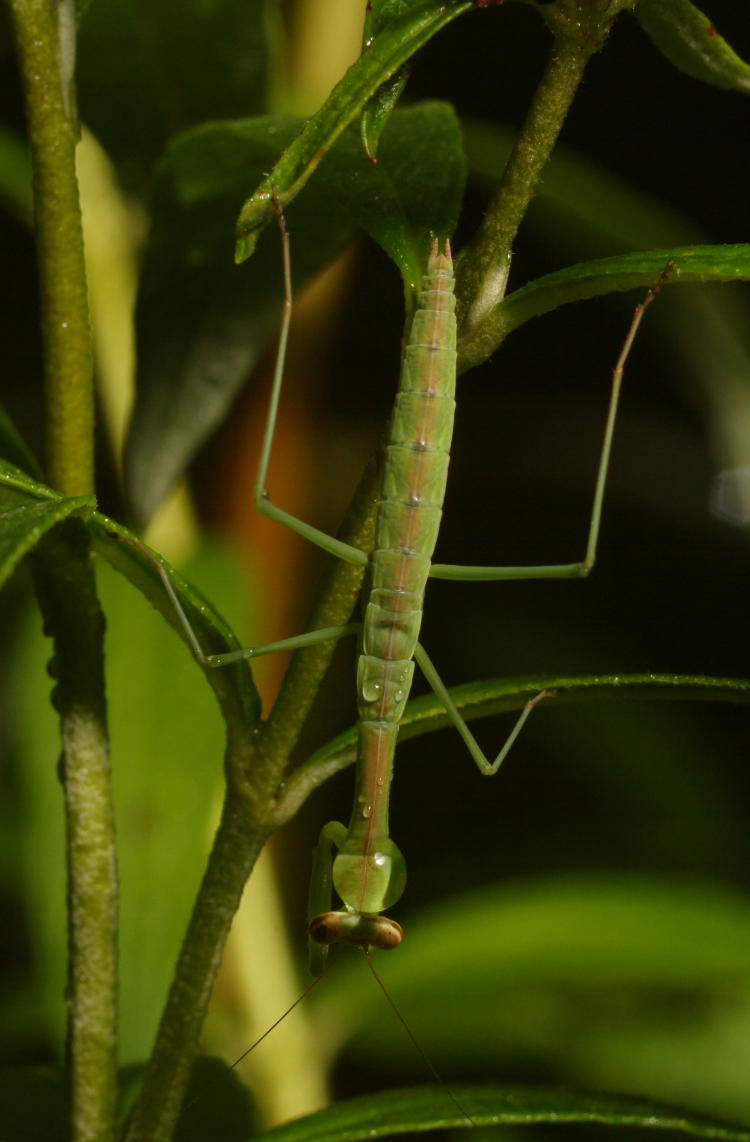
Earlier in the year – this was taken in June – the juvenile Chinese mantises (Tenodera sinensis) would stake out the plants, usually sitting just beneath the clusters waiting to snag a meal or twelve, but as the mantises grew larger, less able to hide among the leaves, they abandoned the bushes and let others take over. Though while we’re here, check out the raindrop on the mantid’s back above.
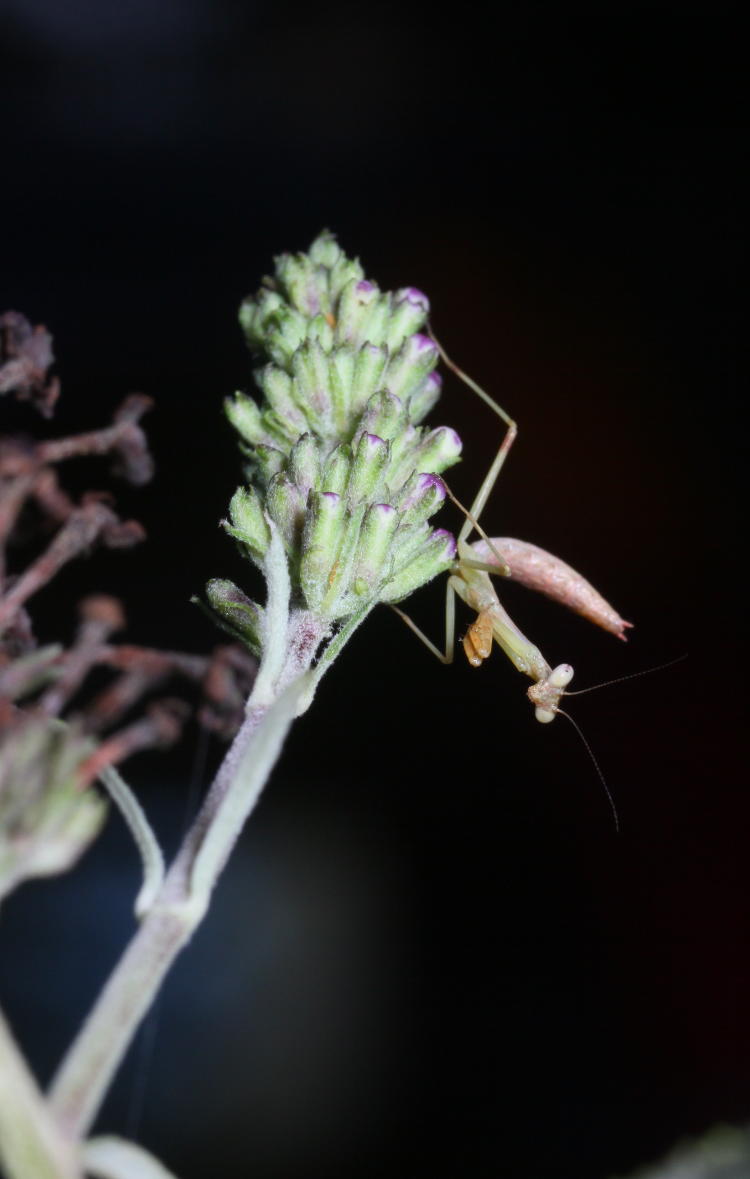
Carolina mantises (Stagmomantis carolina) hatch later in the year and are much smaller than Chinese mantises, so they maintain a longer stalking season on the bushes. Aside from their size, a key identifier is the abdomen curving upwards, often quite sharply as seen above, other times not as much.
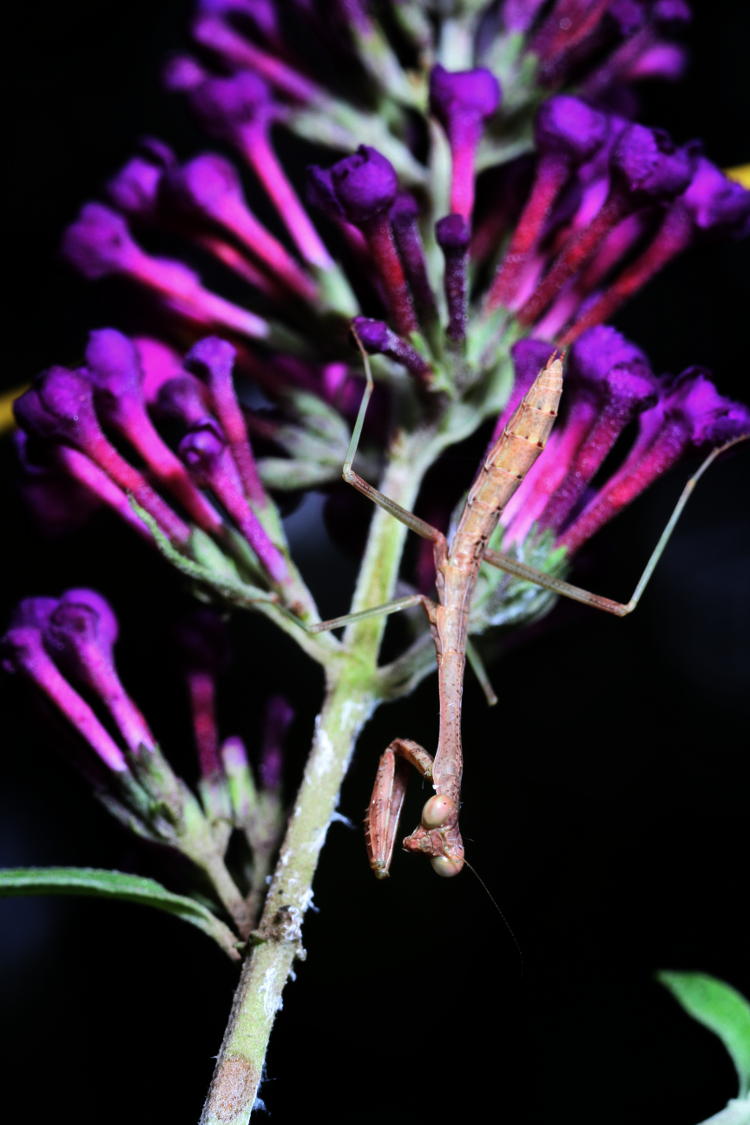
[Boy, let me tell you, it’s getting tedious putting in these photos. Each one has the subjects identified in common and scientific names, which hardly trip lightly off the keyboard, so each photo has practically a sentence for the embedded description, but this is very helpful to any image searches for such species.] This is a particularly vivid specimen, even when camouflaged this way, and might even have been the one that I later watched stalking a skipper. I really should have sat down and staked out the bushes for a while this summer – that’s why I got them, really – because now we’ve passed the season when the mantids would be using them, even the Carolina mantises now in reproducing adult phase and not hanging around on these particular plants.
But they weren’t the only ones that liked the bushes. Back in July, I spotted a lacewing egg and went in for a tight closeup, getting more that I imagined.
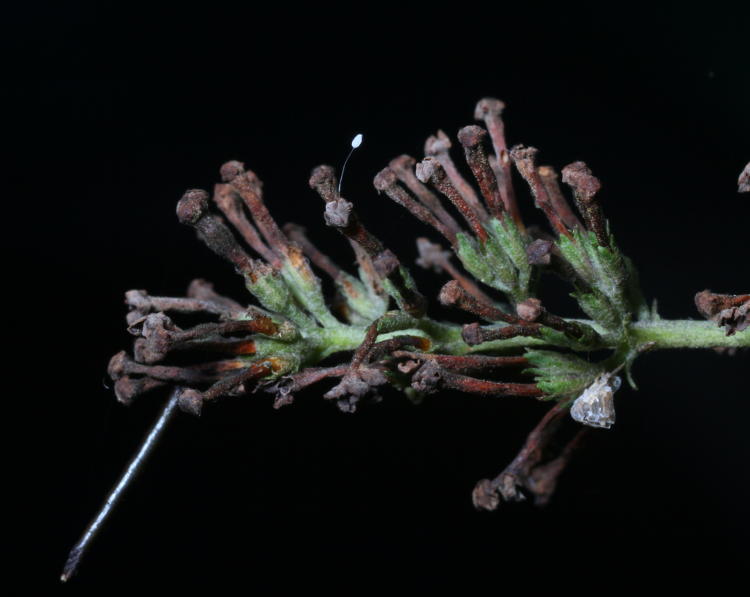
That’s the lacewing egg at the top, the white thing on top of the threadlike stalk – that’s how lacewings lay their eggs. But lower to the right, we have the molted exoskeleton of the leafhopper nymphs that were partaking of the plant’s sap, while to the left, the camouflage behavior of an unidentified ‘inchworm’ caterpillar, doing a great job of looking like a twig; neither of these were spotted until I examined the photos afterward.
And finally (so far, anyway) we have a brief visit from a sphinx moth.
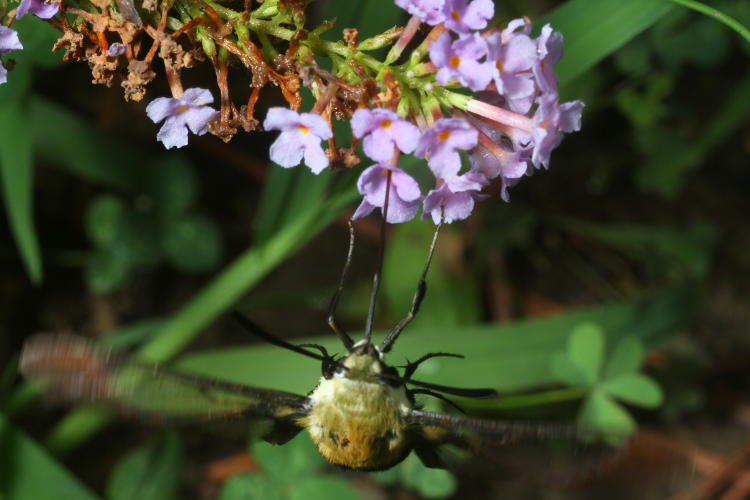
I had the camera in hand for just one visit from a snowberry clearwing moth (Hemaris diffinis,) though I’ve seen at least one other visit, and in my experience the clearwings seem to prefer the butterfly bushes – there’s a shot from another location coming up later on. With their long proboscises (or proboscides) the clearwings make short order of the tiny amount of nectar that can collect in those blossoms, taking less than a second for each, so the hovering moths flit their way around the blossom clusters fairly quickly, and nailing focus is challenging – this post contains the best photos that I’ve taken of them to date. But their season isn’t over yet, so maybe we’ll see what happens a little later on in the month. In the meantime, this post features a previous incarnation at the old house almost exactly seven years ago, attracting far more attention than this years’ plants. I just take that as a challenge.



















































